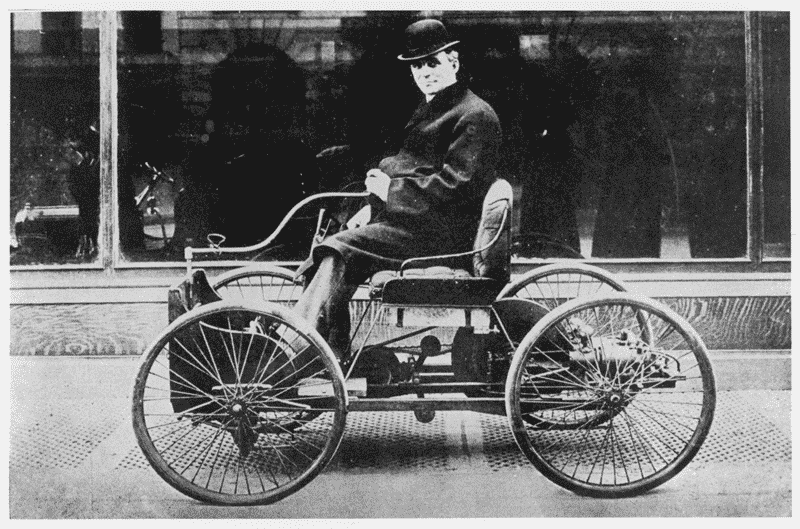Patent for a Motor Carriage

The history of patents comes with challenges and lessons that modern inventors can learn. For example, the 21st-century press abounds with information about patent trolls, companies founded to generate money from patent infringements laws suits instead of production. Most of these patent trolls target technology firms that remain susceptible to lawsuits. As a result, companies are spending their revenue on patent litigation instead of production or research.
Unfortunately, the current market scene is strongly reminiscent of the Henry Ford patent litigation that happened a century ago. An automobile troller beset Henry Ford’s invention resulting in a years-long patent lawsuit that stifled the company’s resources. However, the case ended in a win that left behind valuable lessons and legacies around patent laws in the automobile industry.
From great inventions such as the Henry Ford motor carriage, Apple Jacks cereal to the birth of the first electric razor, the Thanksgiving month has many great creations that got their patents, trademarks, and copyrights.
November 5, 1901 —Henry Ford Motors Carriage Patent
You cannot highlight famous November inventions without mentioning Henry Ford’s Patent for a Motor Carriage. On November 5, 1901, he received a famous patent that saw him grow ford motors into a successful company in the American industry.
Modern inventors may not know much about Henry Ford. This article will serve as a guide to help them understand who he was, the first car that he built and how he revolutionized the industry with his invention. Here we go!
Henry Ford’s History
Born in 1963, Henry Ford began his interest in automobiles from the age of 16 when he started working with the Michigan Car Company Works. The Dearborn, Michigan born inventors grew up repairing and reconstructing mechanical devices. Although he was born in the farming industry, his interest was in working with mechanical devices. The famous inventor was the eldest son of William and Mary (Litogot) Ford. Henry Ford married Clara Bryant in 1982, and the two had one child, Edsel Bryant Ford, in 1893. The inventor attended a one-room school to supplement her mother’s English lessons.
Henry Ford’s Fascination
His fascination for steam-driven engines drove him into a lifetime of engineering and automobile business. Ford entered the automobile business to sell cheap motor carriages by targeting large scale production.
Unsuited for the Dearborn, Michigan farming life, the sixteen-year-old Henry Ford started his engineering involvement at Michigan Car Company Works. He later worked in the shipbuilding industry before returning to his home to operate and repair Westinghouse Company’s steam engines.
History of Henry Ford’s Famous Inventions
The industrialist is known for revolutionizing the assembly and factory production for the automobile. However, before the famous 1901 Patent for a Motor Carriage, Ford had made major contributions in the automobile industry:
· Quadricycle
While at the Edison Illuminating Company in Detroit in 1891, Henry Ford spent his spare time assembling experimental gasoline-powered engines. This venture resulted in the Quadricycle, the first Ford Vehicle, in 1896. This upgrade to the previous gasoline-powered vehicles broke down on its first maiden trip because it lacked essential features such as breaks and a reverse gear. Its two-cylinder engine powering four bicycle wheels generate four horsepower that could rotate the bicycle chain at 20 mph. 1n 1898, Henry Ford produced a second ford model of the gasoline-powered Quadricycle. He resigned to venture into this new enterprise at Detroit Automobile Company, but the venture failed after one year.
· The Race
After the failure of the gasoline-powered Quadricycle, Henry Ford Shifted his attention towards developing racing engines. He established his name among the many famous inventors in the Detroit racing community for producing a two-cylinder lightweight engine that was superior to the existing four-cylinder models. However, demand shifted to all-purpose vehicles forcing him to strategize and rebrand to Cadillac Automobile Company.
Ford Joined the Industrial Community
Henry Ford’s famous inventions opened new opportunities and partnerships in the Detroit Industrial community. He met renowned coal dealers Alexander Malcolmson who became his first partner in producing lightweight conventional automobiles. They founded Ford Motor Company, which made a stride in the industry dominated by Olds and Dodge. In 1903, the company embarked on revolutionizing the lightweight automobile industry with large scale assembly and production of automobile parts. The company expanded rapidly, making its name in the community.
Law Suits Around the November 5, 1901 Patent for A Motor Carriage
In 1903, Henry Ford became George Selden target. Association of Licensed Automobile Manufacturers filed a lawsuit against Henry Ford’s Ford Motors Company. The New York patent attorney, George Selden, had obtained a patent that had benefited him for years. He claimed that it gave authority over America’s gas-powered automobiles. He had submitted a patent claim in 1987 after failed attempt to invent an internal combustion-powered horseless carriage. George Selden used his legal expertise to file a patent and make regular amendments to extend its 17-year life.
After 16 years of waiting, Selden finally received a patent for the automobile idea. With the help of a financier, William Whitney, they began pursuing automobile companies for using the Seldon patent. Henry Ford did not attract their attention until 1903, when his reputation was already established. The irony was that Ford had been rejected for license by ALAM, who declared him an automobile assembler. However, the patent war still came and lasted from 1903 to 1911. Ford initially lost the battle at the Southern District of New York but refused to settle, unlike companies such as the general motor. He appealed the case a got a favorable ruling in 1911 because his invention was a four-stroke engine different from Selden’s two-stroke engine.
Importance of Henry Ford Motor Carriage Patent for Modern Day Inventors
Henry Ford’s patent led to the end of patent trolling and monopoly in the automobile industry. His case with ALAM left behind necessary reforms around patent-sharing arrangements and the protracted nature of patent cases. Modern innovators learn the following essential lessons from Henry Ford’s Patent:
- The importance of having a prototype for a unique idea in patent application
- You can patent a process or process that is not obvious to other manufacturers
- Every innovator has a right to patent protection
- Anyone using your patent must obtain permission to use, make and distribute patented products or processes. As a patent holder, you must issue a patent license to allow a third party to use your invention
- It is important to your invention idea to avoid patent infringement lawsuits when your launch your product
- You can only patent an industrially applicable idea
On the bottom line, new innovators should be aware of the changing paradigm in the innovative industry. Therefore, they must always be creative in finding a patent strategy that incorporates protection beyond the traditional area. Today’s innovation targets practical application in technology and computer function.








